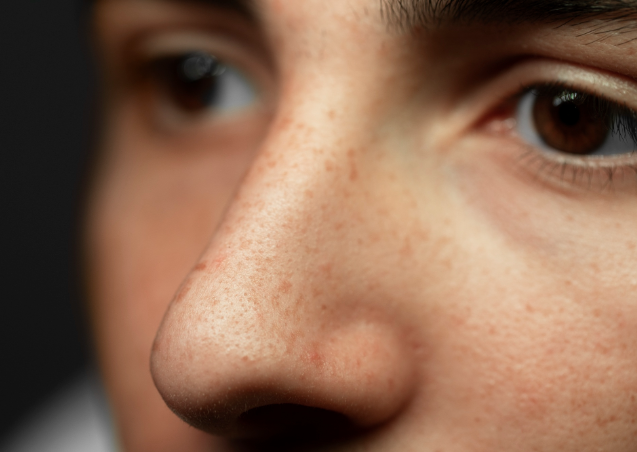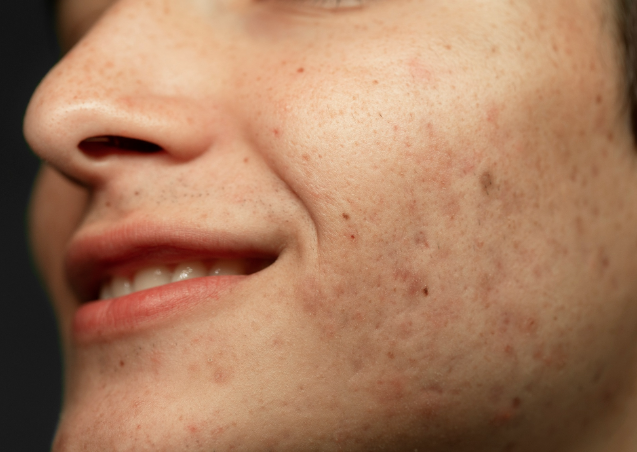
Melasma is a skin condition characterized by brownish and blackish pigmentation of skin, mainly over face in patches. It might rarely involve extra facial areas too, like hands and neck.
The most common areas involved by melasma are cheeks, forehead, bridge of the nose, chin, upper lip.
The most common triggering factors are :

The diagnosis of melasma is mainly clinical. Our team of expert dermatologists can look at your skin and diagnose melasma and differentiate it from other cause of hyperpigmentation.
Melasma needs multi-modal treatment. According to the patient's condition and the types of melasma, treatment is customised.
Chemical peel is a procedure where different concentration of glycolic acid, salicylic acid or other active ingredients are applied over the patches under strict medical supervision.
They help in shedding of discolored skin by exfoliation and helps to get rid of that extra melanin. You might need minimum 6-8 sittings of chemical peel at regular interval to attain satisfactory results.
Laser helps to penetrate the deeper layers of the skin to break down excess melanin affecting surrounding skin. At Zoe Aesthetic, we use US FDA approved Q-switch Nd:YAG Laser in the treatment of melasma.
However, depending upon the severity you might require multiple sessions for satisfactory results.
Melasma is never considered a health risk, but it is a cosmetic concern. If not treated, it might spread to the whole face. The maintenance treatment of melasma including avoidance of sun exposure is most important in avoiding re-occurrence of melasma.